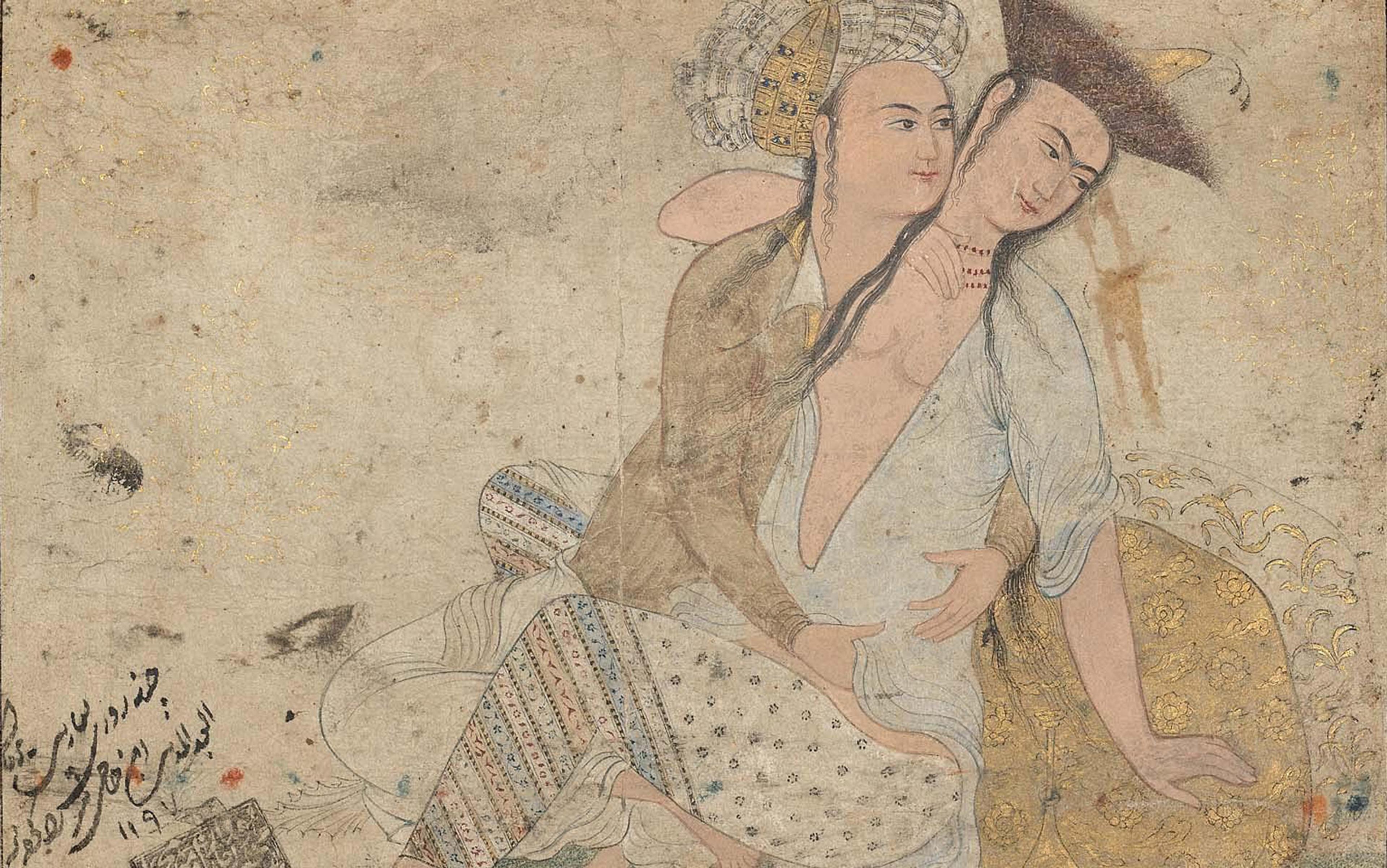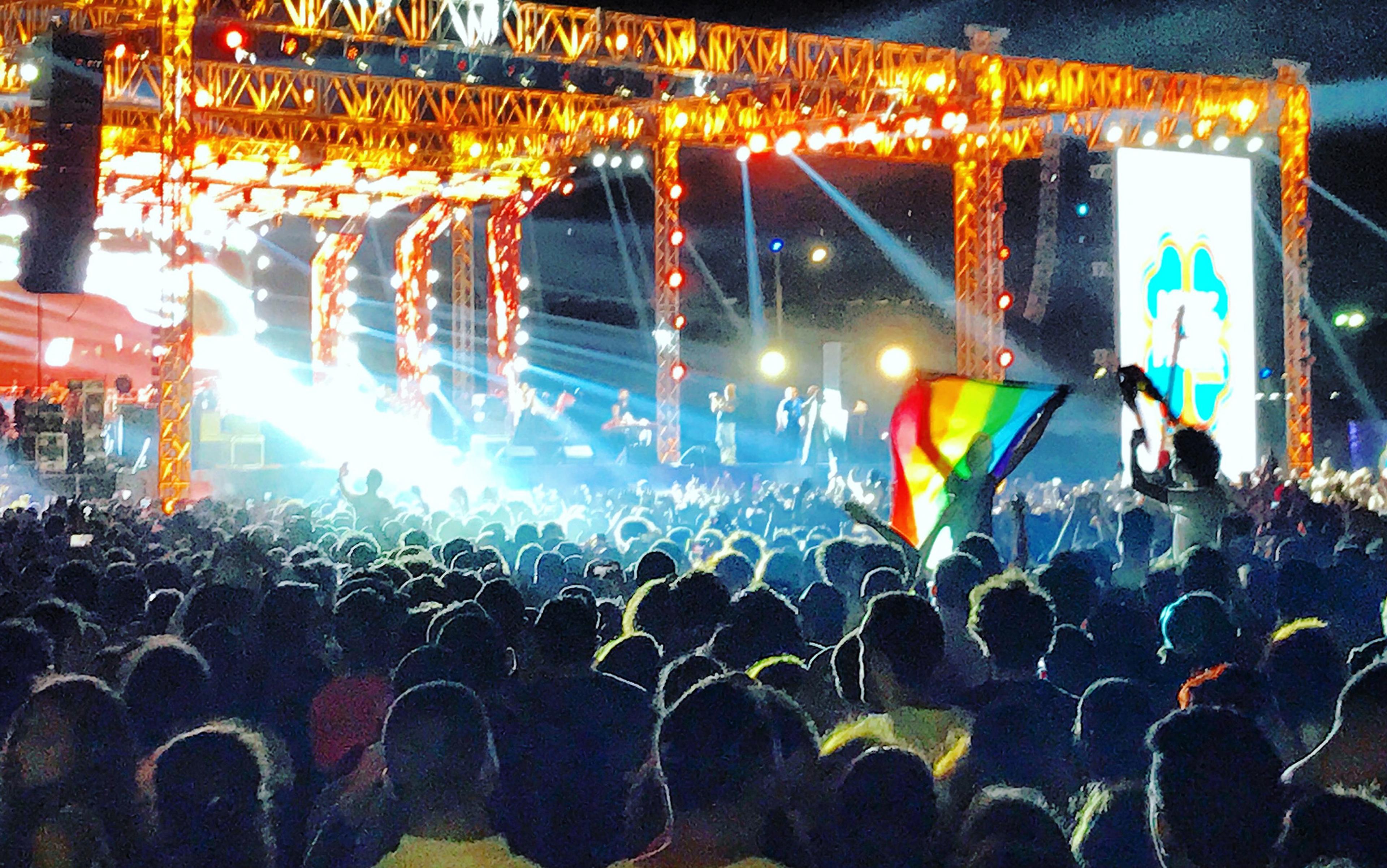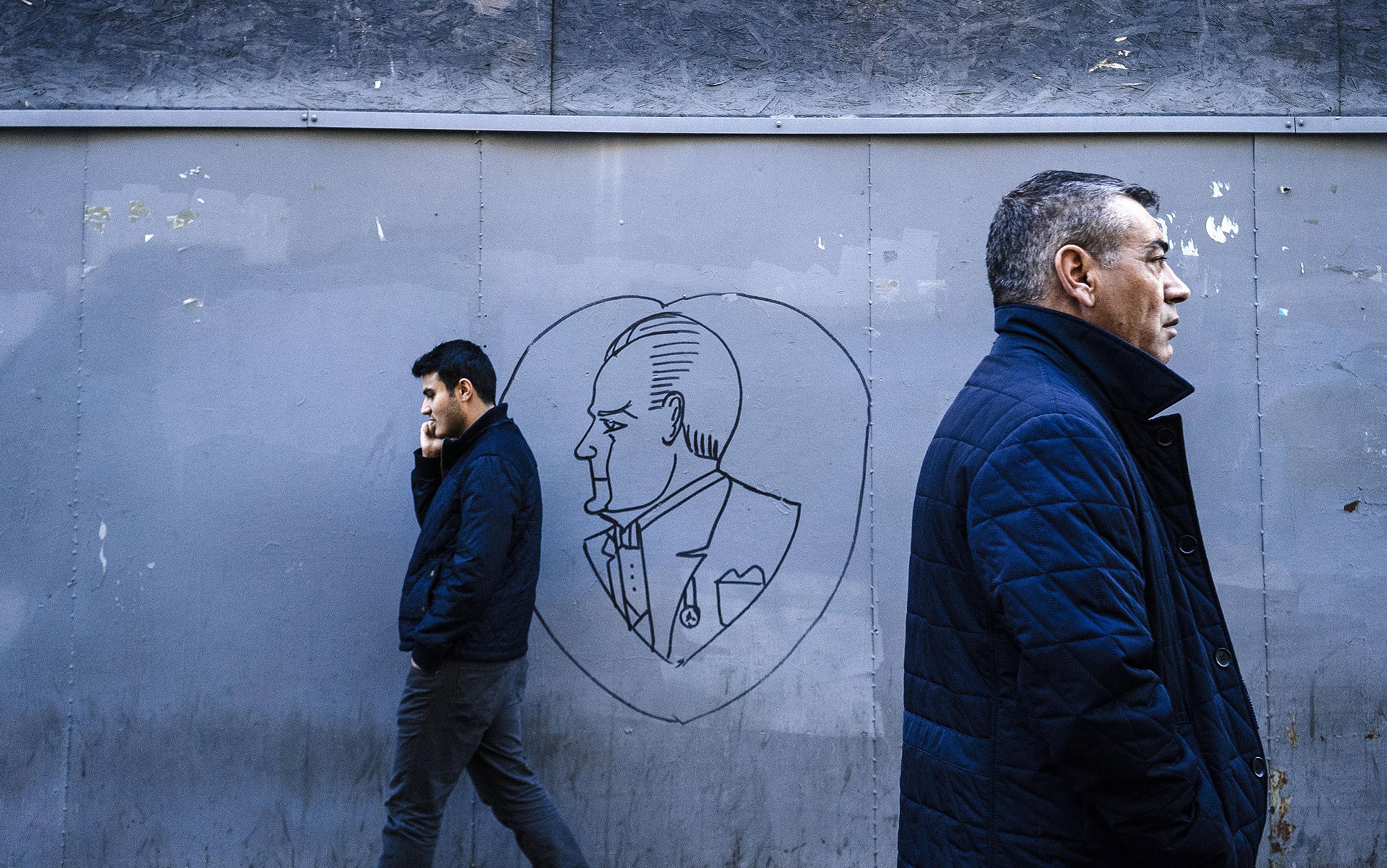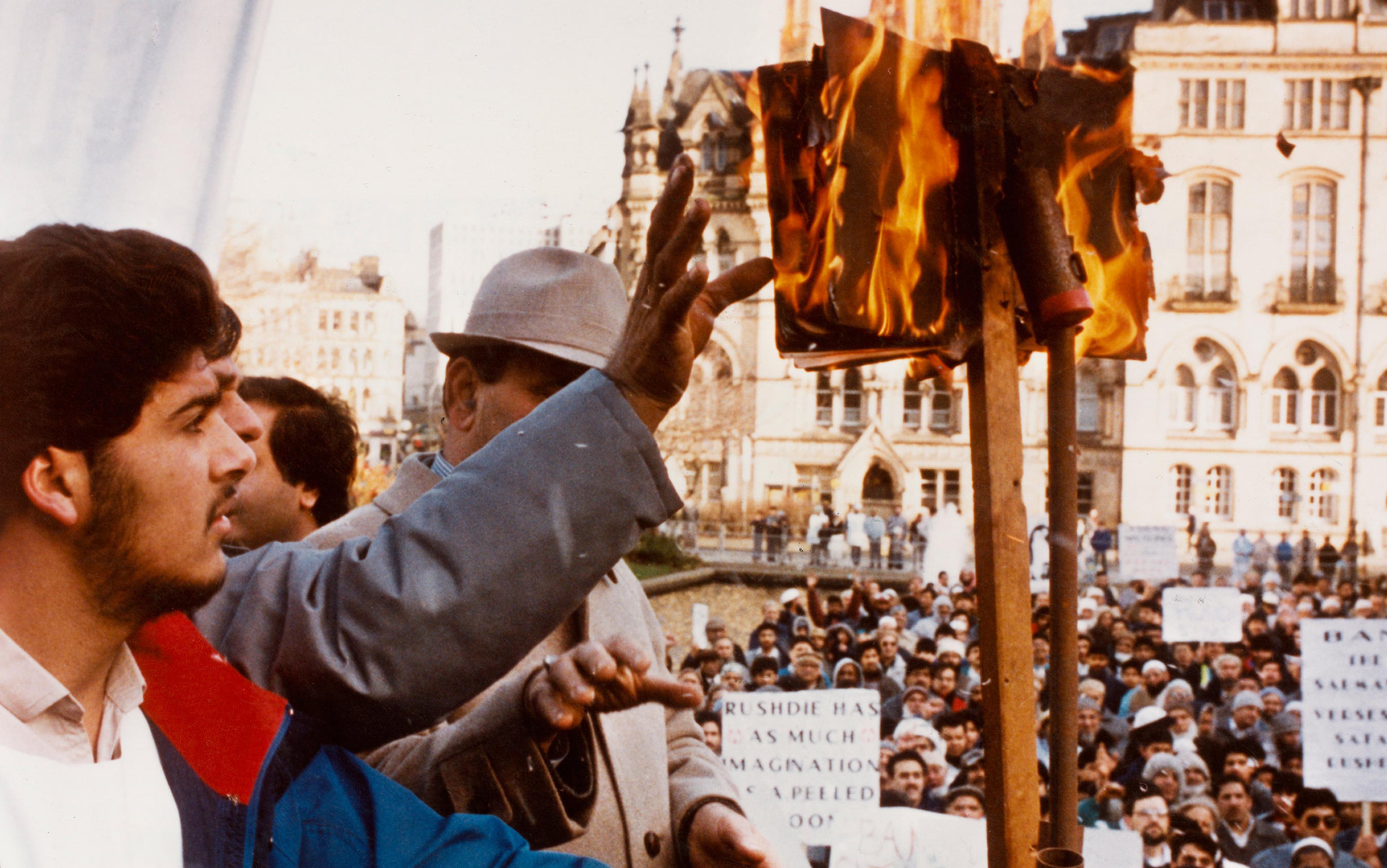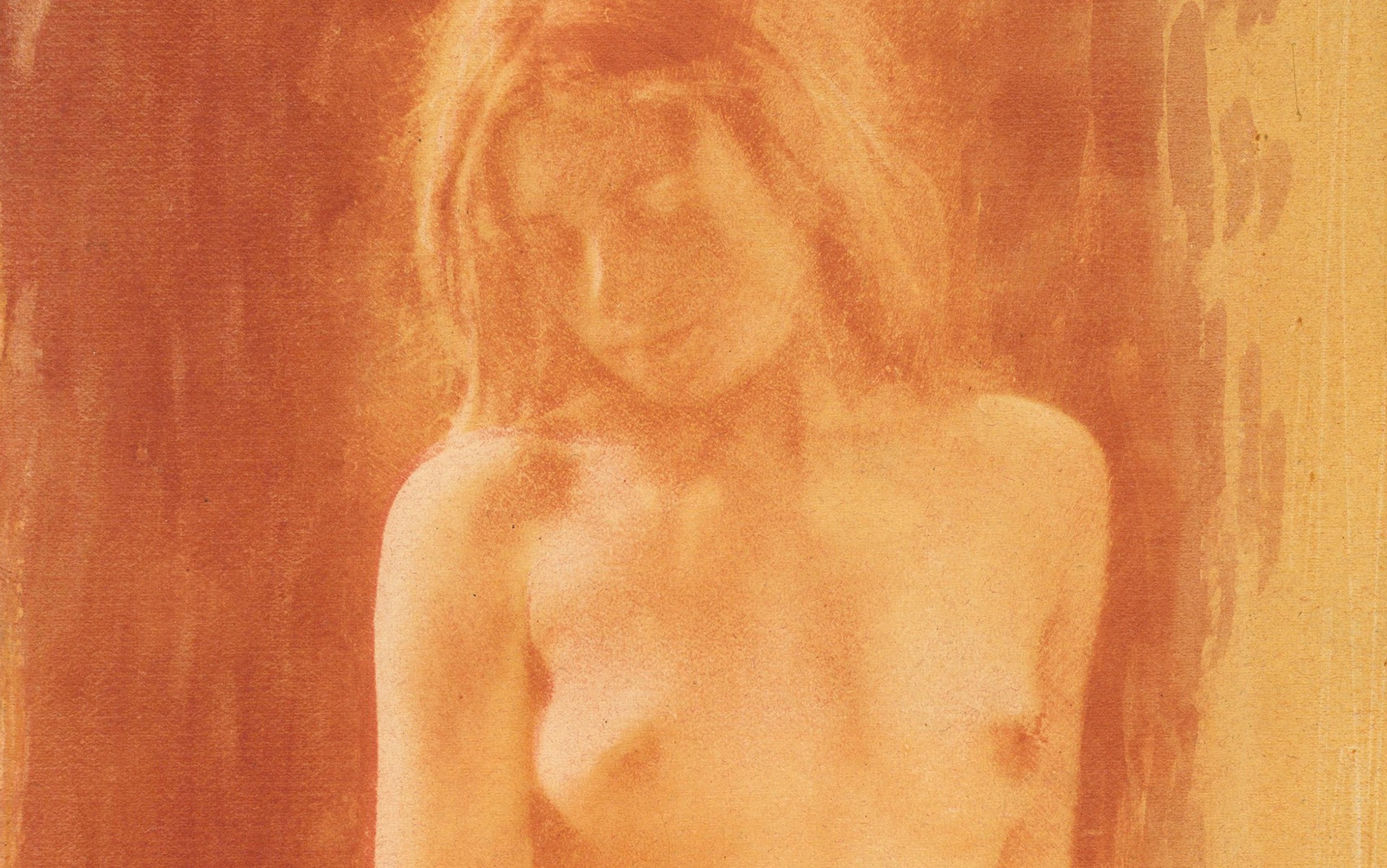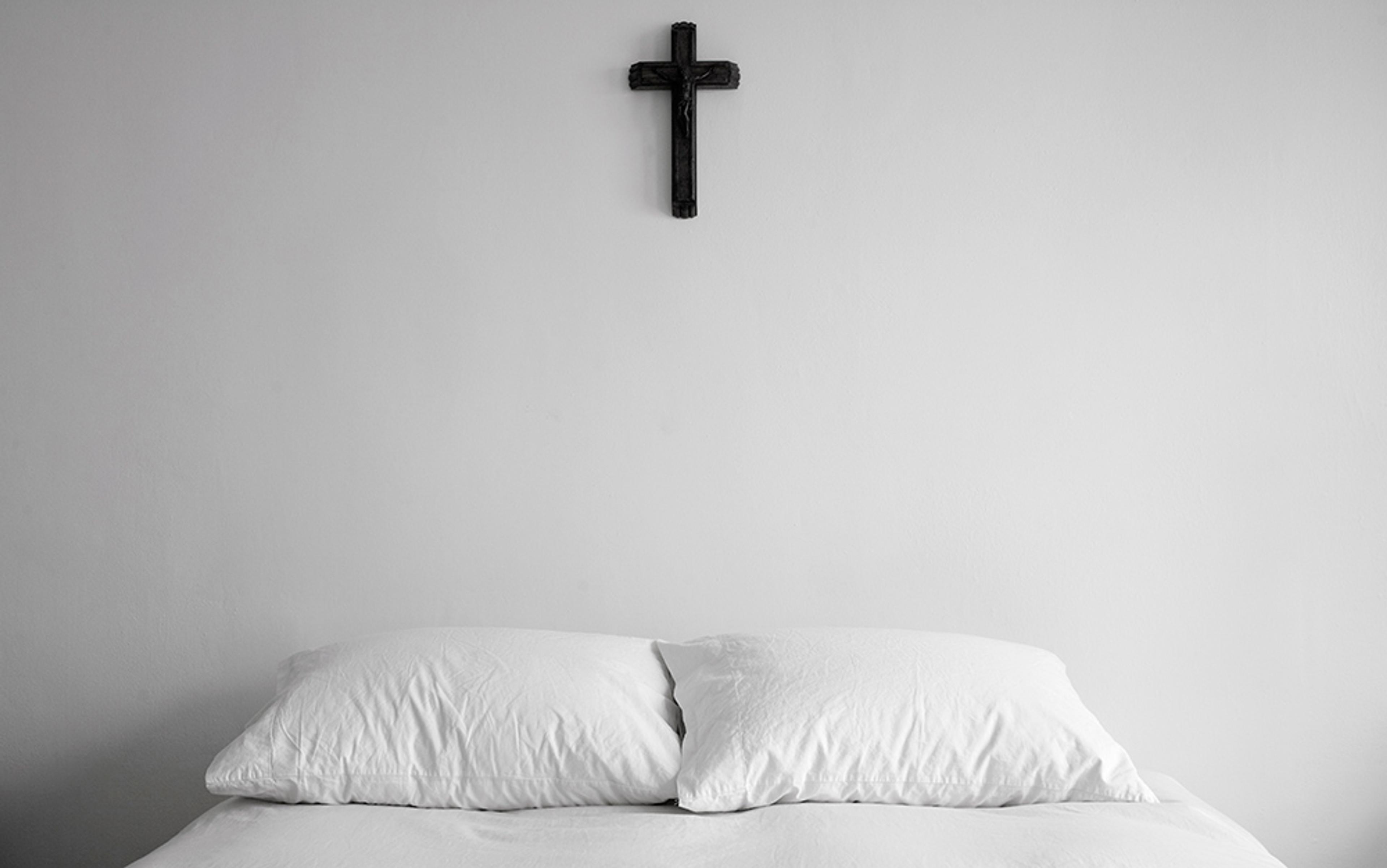The Muslimah Sex Manual: A Halal Guide to Mind Blowing Sex, a slim volume self-published in 2017 by a Muslim woman using the pen name Umm Muladhat, is a compilation of well-worn sex tips. The book offers no new spin on this tired advice, nor a real anchor to hold it all together. Even Muladhat’s prose feels ripped from the pages of Cosmopolitan and self-published erotica. She promises readers to ‘take you down [a] delightful rabbit hole of pleasure … [and] teach you how to make your husband look at you with unbridled lust … transformed into a man who can’t keep his hands off of you and brims with jealousy when other men so much as glance at you.’
Yet within days of its release, Muladhat’s book drew a wave of attention from media outlets and bloggers worldwide. This had little if anything to do with her insights, and almost everything to do with the perceived novelty of a Muslim woman writing openly about sex for Muslim readers.
The surprise was warranted. While the Muslim world is both widely dispersed and incredibly diverse, Muslim cultural critics and scholars have often noted a squeamish reticence to talk about sex, especially in the public sphere, in many Muslim-majority communities. When sex does come up, it’s often in the context of sermonising on modesty and gender segregation, or private talks or marriage counselling on pure sexual mechanics, wrapped in heteronormative values. Even relatively socially liberal Muslim-majority nations such as Lebanon and Tunisia struggle with sex talk: Lebanon launched the Arab world’s first modern public sex-ed programme in 1995, but had to junk it five years later due to religious pushback; no other Arab nation tried to succeed where they failed until Tunisia, late last year.
Many previous attempts to write about sex and intimacy from an Islamic perspective have failed in the face of censorship and criticism. In 2011, the Pakistani physician Mobin Akhtar tried to release the dryly medical Sex Education for Muslims only to get hauled in for questioning by a local governmental official, labelled a quack by his colleagues, and barraged with threats for supposedly fostering un-Islamic discourse. The north African Muslim author of the erotic novel The Almond (2004) used the pseudonym Nedjma to minimise the impact of this type of blowback, and has openly criticised modern Muslim takes on sexual discourse as ‘disfigured’. Observant educators, such as Mohammad Shahidul Islam and Mizanur Rahman of the University of Dhaka in Bangladesh, have lamented that all of this leaves teachers trying to work from a Muslim perspective reliant on secular materials that might not speak to them or their communities when they try to create sex-ed programmes.
This apparent lack motivated Muladhat to write The Muslimah Sex Manual. She had noticed Muslim youths complaining about their friends’ and families’ reluctance to talk about sex on religious grounds – about getting quick tutorials on sexual hydraulics, but never learning about the full spectrum of desire and sexual activity before getting hitched. Many more seemed to believe that devout faith mandated ‘dull sex lives and never ventur[ing] outside of the vanilla’. These friends told her that her sexual knowledge and openness was unique and valuable. Both she and the press ran with that notion, promoting her book as groundbreaking.
But the lack that Muladhat and her reviewers noted is actually a recent phenomenon. From the birth of Islam until about 150 years ago, the Muslim world was a hotbed of explicit, freewheeling sexual advice and erotica that can feel as steamy now as ever – a common and visible oeuvre that I call Islamic sexology. In fact, Islam was so open about sex that less open neighbouring Christian cultures often attempted to smear it as the faith of choice for sex-crazed deviants. As early as 962, the Christian writer Hrotswitha in Germany excoriated the recently deceased Caliph Abd al-Rahman III of Córdoba and his countrymen in The Passion of Saint Pelagius as ‘debauched by the sin of sodomy’ and ‘polluted with the lust of the flesh’.
Not all of the advice in Islamic sexology has aged well – like the insistence of Avicenna, the 11th-century Persian polymath and father of modern medicine and philosophy, that shoving a hot pepper up a woman’s vagina after unprotected intercourse was as reliable as any Plan B. The way that Muslim writers across the ages talked about male anal penetration as inherently emasculating or pathological, not to mention a number of other common tropes about gender and sexuality, also certainly clash with modern secular, progressive values. But some common advice, such as calls for men to explore more foreplay and learn about female anatomy and orgasms, as well as the way that Islamic sexology views sex as a source of pleasure in its own right, diverse and open to exploration and experimentation, are as valuable now as ever.
Islamic sexology faded from popular consciousness in the face of a rising tide of religious conservatism, which has influenced most modern Islamic communities to some degree. But it never fully vanished. Many Muslims today watch or engage in blunt sexual debates and conversations led both by relatively conservative figures such as Heba Kotb, who hosts a sexual advice show on Egyptian TV, and openly queer and progressive educators such as Wazina Zondon in the United States and activists working within an Islamic framework such as Helem in Lebanon or Nazariya in India. They not only give secular sex activists, educators and writers a run for their money, but highlight an incredible amount of stereotype-exploding diversity within the faith.
Sex shows up in Islam’s earliest religious texts: the Quran, the direct word of god, and in the hadith, instructive stories of the prophet Muhammad’s deeds and sayings transmitted orally via his closest companions, although written down only about 150 years after his death in the 7th century CE. The Quran relays the sort of broad overarching values one might expect from an Abrahamic faith, such as admonitions against sex outside marriage and endorsements of public modesty and chastity. But dozens of hadith offer concrete, often candid and detailed, prophetic takes on sex and sexuality.
Numerous hadith suggest that new Muslims often asked the prophet what their conversions would mean for their sex lives. Muhammad responded with lectures on, among other things, consent, foreplay, and the value of maintaining compassion and playfulness in bed. A man, he stresses in at least one tradition, ought to make sure his female partner is satisfied before himself. That’s just part of being a good Muslim. He also held forth to his followers on things such as the merits of the withdrawal method, and even declares good sex sadaqa, an act of holy merit.
In one notable account, the prophet berates a man who, in a fit of piety, has devoted his life to fasting and prayer – and given up on sex in the process, to his wife’s consternation. Abandoning the god-given gift of good sex is an affront, the prophet seems to suggest. Most experts agree, based on this and similar hadith as well as key Qur’anic verses, that Muhammad believed women have a right to sexual pleasure, and their husbands have an obligation to fulfil that right if they can. If a woman isn’t getting sexual satisfaction at least once every four months when she has a partner and wants to have sex, interpreters say, she has grounds to divorce him and seek a more sexually giving or compatible partner.
Although Islamic scholars have compiled thousands of hadith covering an array of sexual topics in granular detail and cast them as the core guide to Islamic life and values, these accounts cannot and do not cover every facet of human life. Islamic authorities also argue to this day over the authenticity of certain hadith, admitting that accounts often contradict each other and that this could be due to tainted or invented transmissions. One hadith, for instance, declares that anyone caught sleeping with an animal ought to be killed. Another says it’s no big deal.
‘Islam has no Vatican to determine what is normative,’ explains Tim Winter, also known as Shaykh Abdal Hakim Murad, a British Muslim scholar and Islamic marriage counsellor. So no one can ever put disputes about the precise meaning of Islam’s sexual borders to bed.
This lack of certainty has fuelled centuries of debate about how to vet and interpret hadith, drawing out the essence of the most valid accounts to apply them to everything under the sun, sex included. From medieval to modern times, Islamic scholars have felt obligated to dissect, debate and rule on the fine details of every single sexual act or dynamic to figure out how god and his prophet would have dealt with it. And not just obscure scholars. The founders of every madhhab, or major Islamic jurisprudential school of thought, working in the 9th and 10th centuries and their successors explored the fine details of sex and sexuality in depth in their works. The prominent 15th-century Egyptian religious scholar Al-Suyuti wrote at least 23 tomes on sex and sexuality. ‘Matter-of-fact, explicit descriptions of, and recommendations on, sexual techniques are always included in [Islamic] law and ethics manuals’ to this day, says Winter.
Shia scholars maintain that anal is permissible, so long as a female partner enthusiastically consents to it
Over the centuries, religious scholars have gone back and forth on what core holy texts and traditions mean for a number of sex acts, including anal play, says the economist Junaid Jahangir who teaches at MacEwan University in Canada and studies sex and sexuality in Islamic texts. The Quran recounts the story of Lut (Arabic for Lot), used to condemn anal sex in most Abrahamic faiths; a few hadith even claim that Muhammad expressly stated that anal sex is not Islamic.
Yet scholars have long quibbled – in explicit detail – over exactly how impermissible anal play is in the eyes of their god. From the 9th to the 12th century, Jahangir points out, at least one school of Sunni scholars argued that the impurity of faeces and the anal cavity, and the presumed pain involved for receptive partners due to a lack of natural lubrication, make anal sex distasteful – but that it is makruh rather than haram. That’s to say, god dislikes anal sex and heartily recommends against it, but does not forbid or hold it against practitioners. Even as Sunni texts drifted away to more hardline anti-anal positions, most Shia scholars maintain that anal is inadvisable yet permissible, so long as a receptive female partner enthusiastically consents to it.
And even among Sunni scholars who condemn anal sex, Jahangir notes, some have argued among themselves, and still argue to this day, about where exactly anal impurity and impermissible sex starts. Is it okay to finger or lick the outside of a partner’s anus? If one does allow for external anal stimulation, when does one cross the border into internal fingering?
Starting in the 9th century, Muslim intellectuals such as the Baghdadi author Al-Jahiz and the physician Al-Razi, remembered for his study of smallpox and measles, developed a distinct stream of sexologic literature: ’ilm al-bah (Arabic for ‘knowledge of coitus’). While often informed by religious works, these books, including the 10th-century Encyclopaedia of Pleasure by the Baghdadi physician Ali ibn Nasr al-Katib, offer pragmatic advice based on lived experience and observations of sex, as well as scientific understandings of the era.
Al-Katib’s Encyclopaedia draws on the 2nd-century Greek physician Galen’s examination of his own daughter, who preferred sex with women to sex with men, to try to explain lesbianism as the result of a vaginal itch that can be scratched only by others’ vaginal fluids. He quotes Socrates to build a case for communicative sex and the glories of dirty talk, and outlines contemporary Bedouin Arab communities’ supposed glorifications of chaste longing for distant beloved figures in order to reject it, arguing that intercourse is essential to a good relationship. ‘Coitus,’ he claims, ‘gives fire to the soul, joy to the heart, renewal to intimacy.’
Often, works of ’ilm al-bah offer rundowns of penetrative and non-penetrative sex positions and acts, aphrodisiacs, and proposed penis enlargement and vaginal tightening products, as well as comprehensive guides to coital etiquette. Works such as Avicenna’s The Canon of Medicine convey these insights through dry lists. Others use narratives and poems. In The Ring of the Dove, the 11th-century Andalusian poet and philosopher Ibn Hazm reflects on the potency of early stage love via the story of ‘a man who was sore smitten with desire for a maiden inhabiting a residence close neighbouring his’, and who, upon learning he’d get to see and be with this woman, goes ‘crazy and well-nigh delirious with delight; his speech was barely coherent.’
Grounded in lived experience, ’ilm al-bah authors often describe, or even promote, sexual acts and dynamics – such as homoeroticism – that religious texts may seem to dismiss. The Qabus-Nama – an 11th-century guide to life written by Keikavus, the ruler of Tabaristan, for his son, Gilanshah – spends a chapter dwelling on the pros and cons of heterosexuality and homosexuality, ultimately coming down in favour of bisexuality. One of the most famous books of ’ilm al-bah in the modern world is The Perfumed Garden of Sensual Delight, compiled by a Berber scholar known as Al-Nefzawi on commission for a 15th-century ruler of Tunis. In addition to its chapters on slang for genitalia and ‘prescriptions for increasing the dimensions of small members, and for making them splendid’, it offers a chapter on the joys of sleeping with men as opposed to women.
Parallel to ’ilm al-bah, poets across the Muslim world also developed a rich (often homo) erotic tradition, from the 9th-century works of the formative Arabo-Persian poet Abu Nuwas, which revel in the beauty of young men, to those of Rumi, the 13th-century Persian mystic and religious scholar. A deeply devout poet, Rumi at times conveyed ideas about the quest towards divinity through bawdy, hilarious and surprisingly detailed sexual tales, such as one in which a woman catches her maid enjoying sex with a donkey. Envious of her pleasure, the woman gets under the donkey and coaxes it into penetrating her. But she ignores her maid’s suggestion that she use a gourd to limit how deep the donkey can thrust. The donkey ‘pushed through and into her intestines, / and without a word, she died.’ Such is the importance, Rumi tells us, of heeding a teacher’s words – even if that teacher seems lowly – when seeking ecstasy, religious or physical.
It is hard to say how people in the past viewed these diverse strands of sexual thought or pieced them together in their own lives. Amanullah De Sondy, an expert on the history of sexuality in the Muslim world at the University of Cork, suspects that this varied substantially over time and space, and from individual to individual. Some readers might have rejected erotic literature and scientific treatises, and looked solely to conservative religious manuals for sexologic guidance. Yet we do know that some religious figures felt comfortable inveighing against, say, anal sex in religious texts, but then reading, writing and talking about homoeroticism more tolerantly in other contexts. We also know that most of these works were in active circulation across most of the Islamic world for centuries.
Swirling around and often referencing each other, these works together formed a rich, diverse and open line of sexual dialogue and culture: the broad field of Islamic sexology. As most of this oeuvre was written by and for men in overwhelmingly heterosexual contexts, notes Habeeb Akande in A Taste of Honey (2015), it does have many glaring limits and blind spots. Yet this sexologic tradition reflected, and made potential cultural space for, a staggering array of sexual desires and practices – even acts and identities that strict consensus readings of Islamic law seem to consistently forbid, such as homoeroticism, pornographic art, sex outside marriage and so on.
This is not to say that everyone in the Islamic past was a libertine, openly discussing or embracing every act noted in every text. In the past, as now, one could find people who just felt uncomfortable dealing with sex, or took an even more conservative stance than stringent religious texts called for. Not all texts in sexology were equally popular over time and across regions, either, as waves of sexual repression ebbed and flowed.
Muslim communities only occasionally tolerated homosexual acts – and then, mainly in private spaces
Case-in-point: the Quran and hadith recognised the existence of mukhannathun, a term that means ‘effeminate men’ but likely applied at the time to some or all those we now call femme men who have sex with men, trans women, nonbinary folk and intersex individuals. While Arabian society had long accepted mukhannathun in very limited social spaces, and early Muslims seemed to at least tolerate them (to varied degrees), powerful Muslims such as Marwan ibn al-Hakam, the fourth caliph of the Umayyad empire, and his brother Yahya eventually decided that they were unholy. While serving as governor of Medina, one of the brothers executed one prominent mukhannath, and put a bounty on the head of every other mukhannath in his district. Later governors and rulers either stepped back or ramped up this persecution.
Even at their most tolerant, however, Muslim communities only occasionally tolerated homosexual acts – and then, mainly in private spaces. Islamic thought long painted men who liked to penetrate other men as hypersexual; men who received penetration as victims of a disease; and women who preferred sapphic trysts as betraying the female ideal. So, while poets could write hot and heavy poems about the ideal young male form, there was never a place for two same-sex individuals to live openly as a couple.
In short, while the diversity of Islamic sexology fostered deep and broad wells of erotic knowledge, Muslim communities only occasionally tolerated homosexual and other non-normative acts – and then, mainly in private spaces. Nonetheless, the writings helped to support the lives of people whom De Sondy refers to as ‘unruly Muslims’ – for instance, Mirza Ghalib, the licentious 19th-century Mughal poet. ‘He was married and had a ton of kids,’ De Sondy explains. ‘He also frequented courtesans and publicly walked around drinking alcohol.’
Despite all this, by the mid-19th century, sexology was all but extinct in most of the Islamic world. Intellectuals, government officials and other cultural gatekeepers started to bowdlerise many existing texts, and ban or suppress others, to promote chaste sexual values and root out what they increasingly viewed as sick smut. At the very least, Jahangir notes, if poets continued to write about beloveds, they started to make sure that, as men, they wrote only about comely women.
What happened to this rich sexologic tradition? In a word, colonialism. Jahangir explains that, as European powers started to dominate or have direct control over Islamic lands in the 19th century, Muslim thinkers adopted two divergent, but equally anti-sex discourse, mindsets. One school of thought held that the West could dominate Islam culturally and morally only because it was doing something right. So, in order to survive and thrive, Islamic societies would have to emulate Europe. This led some gatekeepers to adopt conservative European sexual mores of the kind that made Victorian British authorities systematically define, censor and prosecute ‘deviance’ like homosexuality and pornography. Another school of thought held that god allowed the West to ascend as a form of punishment for Islamic decadence – a view that still undergirds conservative interpretations of Islamic scripture and hardline ideologies across the Muslim world. Then as now, these severe forms of Islam had no space for open, diverse sexual dialogue. The repercussions of this cultural shift, Jahangir and others argue, echo to this day, both in Muslim communities and beyond. Critics of Islam often couple language of the most hardline conservatives with their own narrow readings of cherry-picked Islamic texts to make the case that Islam promotes marital rape, misogynistic violence, and pedophilia. But even when Islamic sexology faded from the public sphere and sexual conservatism rose up, the genre never died. After all, as De Sondy says, ‘Islam has always upheld a tradition of counter-narrative.’ The faith not only resists codification, it thrives on debate and evolution (to the chagrin and denial of hardliners).
Any stereotype about Islam and sex is myopic to moronic, built on narrow understandings of Islamic life
In fact, Islamic religious scholars have never stopped debating the details of sexual acts and dynamics. They have issued recent decisions on everything from the morning-after pill (permissible, one scholar argues, so long as those taking it do not believe they have conceived a child) to anal rimming (permissible, another scholar says, as it doesn’t involve penetration). In 2019, a doctoral candidate at the Sunan Kalijaga State Islamic University in Indonesia caused controversy by advancing an Islamic legal-theological argument that sex outside marriage is permissible, so long as it occurs behind closed doors. (Pressure from mainstream conservative scholars forced him to withdraw that position or risk his degree.) ‘When studying in Cairo,’ Winter adds, ‘I found that mosque imams had a limitless supply of blue jokes. These were not broadcast from the pulpit, but were nonetheless seen as socially acceptable.’
Writers such as Mohamed Choukri in Morocco and Tayeb Salih, originally from Sudan but later something of a global citizen, crafted raw, intimate portraits of sex and sexuality in their mid-20th-century novels. Choukri especially had a knack for writing about homoeroticism and masturbation. Granted, that got his books banned in Morocco and a number of other Muslim-majority nations for years. But clearly, the experiences that led him to write about sex and sexuality continued a much older line of erotic thought, even if under a stodgy censorial cloud.
Over the previous decade especially, Muslims across the world have clawed Islamic sexology back into the public eye, whether through books such as The Muslimah Sex Manual or TV shows such as The Big Talk in Egypt. While most of these take reserved, heteronormative approaches to sex, they carry the spirit of frank, vibrant sexual dialogue of the past. As Akande points out, a number of books by Muslim women, such as Sex and the Citadel (2013) by Shereen El Feki and The Proof of the Honey (2009) by Salwa Al Neimi, ‘draw on classic Arabic erotic literature’ to inform modern Muslim readers. And queer Muslims are actively engaged in carving out space within Islam for diverse sexual and gender identities in the modern world. They assert their existence, insist on retaining an Islamic identity, and show how easy they find it to reconcile their sexual identity and faith.
Several Islamic scholars I spoke to for this essay cautioned me about the peril in covering the history of Islamic sexual dialogue. It is easy, they noted, to build, on a page or in our minds, myths of lost golden ages of imperfect yet laudable sexual openness and acceptance. It is equally easy for critics of Islam to turn these myths into ammunition – proof that, while Islam may once have been a great faith, modern Islam is a dangerous regressive monolith, pulling the world toward ruin, and that we must mourn its past while opposing its present.
The point of remembering the history of Islamic sexology is not to glorify or demonise the past or present. It is to recognise that any stereotype about Islam and sex, especially those that paint it as a religion of prudes, is myopic to moronic, built on narrow understandings of highly visible yet thin slivers of one moment in the history of Islamic literature and life.
This sort of history reminds us that faiths are dynamic. They are not simple codes of conduct, sexual or otherwise, but composites of diverse lines of dialogue, all swirling together, rising or falling with tides of time and chance. This means that not just Islam but virtually every faith has the potential to be sexually open, inclusive, and enlightening – or restrictive, exclusionary and stupefying.
